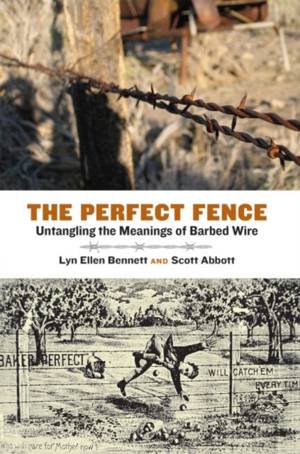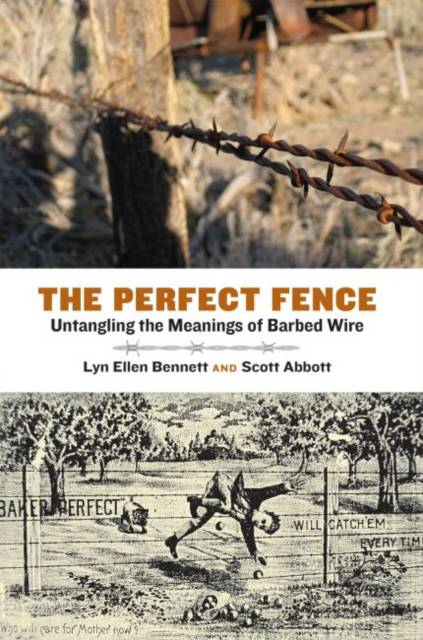
- Afhalen na 1 uur in een winkel met voorraad
- Gratis thuislevering in België vanaf € 30
- Ruim aanbod met 7 miljoen producten
- Afhalen na 1 uur in een winkel met voorraad
- Gratis thuislevering in België vanaf € 30
- Ruim aanbod met 7 miljoen producten
Zoeken
€ 61,45
+ 122 punten
Omschrijving
Barbed wire is made of two strands of galvanized steel wire twisted together for strength and to hold sharp barbs in place. As creative advertisers sought ways to make an inherently dangerous product attractive to customers concerned about the welfare of their livestock, and as barbed wire became commonplace on battlefields and in concentration camps, the fence accrued a fascinating and troubling range of meanings beyond the material facts of its construction.
In The Perfect Fence, Lyn Ellen Bennett and Scott Abbott explore the multiple uses and meanings of barbed wire, a technological innovation that contributes to America's shift from a pastoral ideal to an industrial one. They survey the vigorous public debate over the benign or "infernal" fence, investigate legislative attempts to ban or regulate wire fences as a result of public outcry, and demonstrate how the industry responded to ameliorate the image of its barbed product.
Because of the rich metaphorical possibilities suggested by a fence that controls through pain, barbed wire developed into an important motif in works of literature from the late nineteenth century to the present day.
Early advertisements proclaimed that barbed wire was "the perfect fence," keeping "the ins from being outs, and the outs from being ins." Bennett and Abbott conclude that while barbed wire is not the perfect fence touted by manufacturers, it is indeed a meaningful thing that continues to influence American identities.
In The Perfect Fence, Lyn Ellen Bennett and Scott Abbott explore the multiple uses and meanings of barbed wire, a technological innovation that contributes to America's shift from a pastoral ideal to an industrial one. They survey the vigorous public debate over the benign or "infernal" fence, investigate legislative attempts to ban or regulate wire fences as a result of public outcry, and demonstrate how the industry responded to ameliorate the image of its barbed product.
Because of the rich metaphorical possibilities suggested by a fence that controls through pain, barbed wire developed into an important motif in works of literature from the late nineteenth century to the present day.
Early advertisements proclaimed that barbed wire was "the perfect fence," keeping "the ins from being outs, and the outs from being ins." Bennett and Abbott conclude that while barbed wire is not the perfect fence touted by manufacturers, it is indeed a meaningful thing that continues to influence American identities.
Specificaties
Betrokkenen
- Auteur(s):
- Uitgeverij:
Inhoud
- Aantal bladzijden:
- 296
- Taal:
- Engels
- Reeks:
Eigenschappen
- Productcode (EAN):
- 9781623495824
- Verschijningsdatum:
- 15/11/2017
- Uitvoering:
- Hardcover
- Formaat:
- Genaaid
- Afmetingen:
- 165 mm x 241 mm
- Gewicht:
- 635 g

Alleen bij Standaard Boekhandel
+ 122 punten op je klantenkaart van Standaard Boekhandel
Beoordelingen
We publiceren alleen reviews die voldoen aan de voorwaarden voor reviews. Bekijk onze voorwaarden voor reviews.








